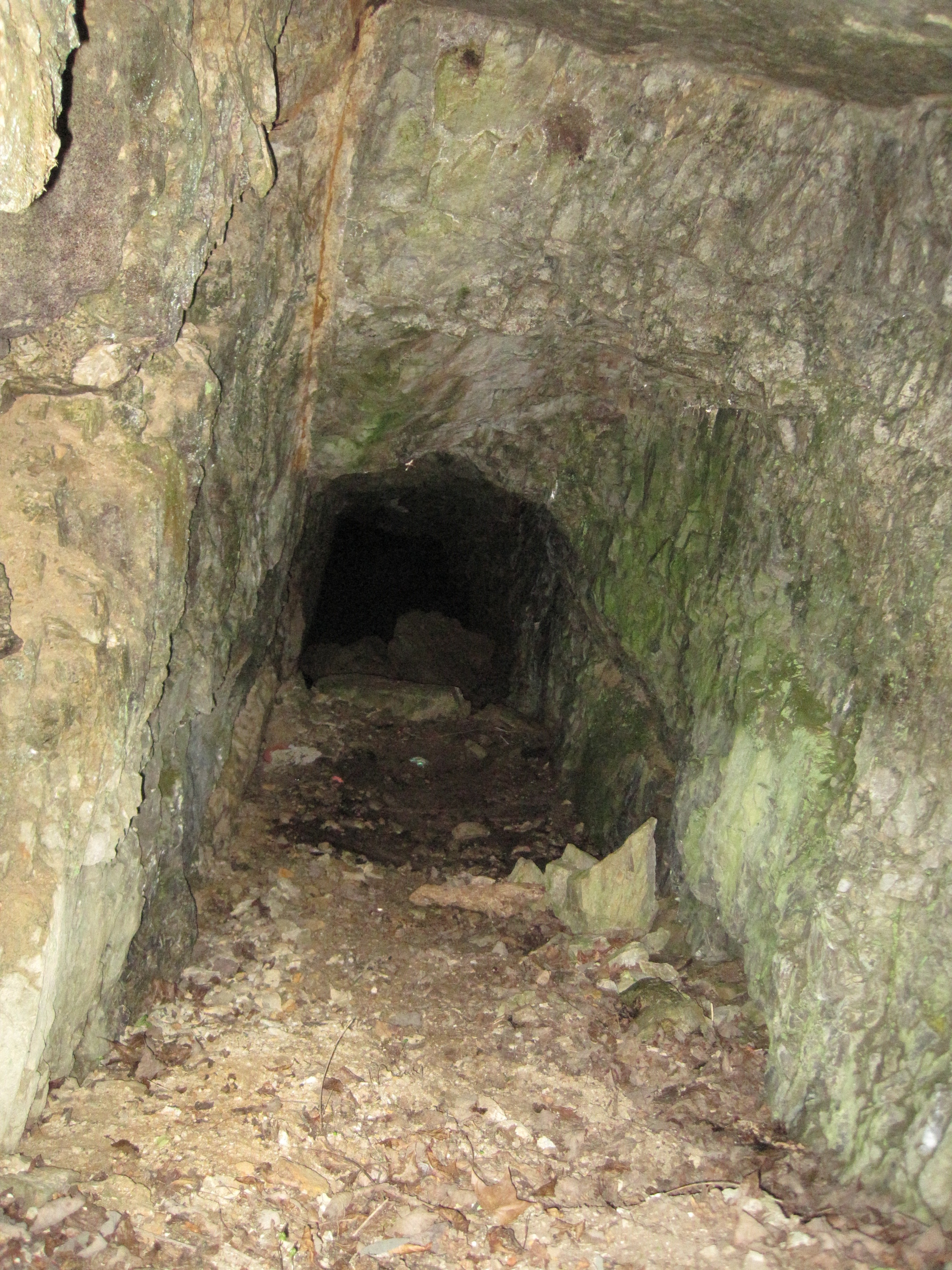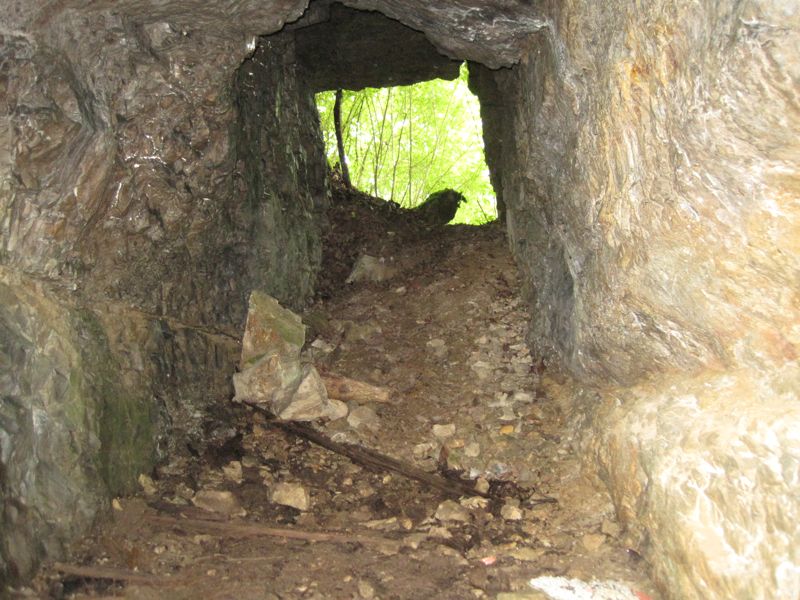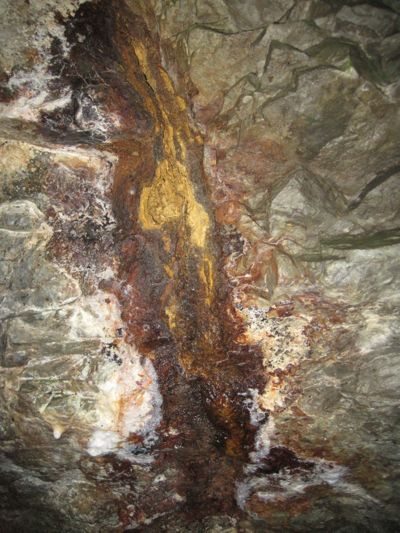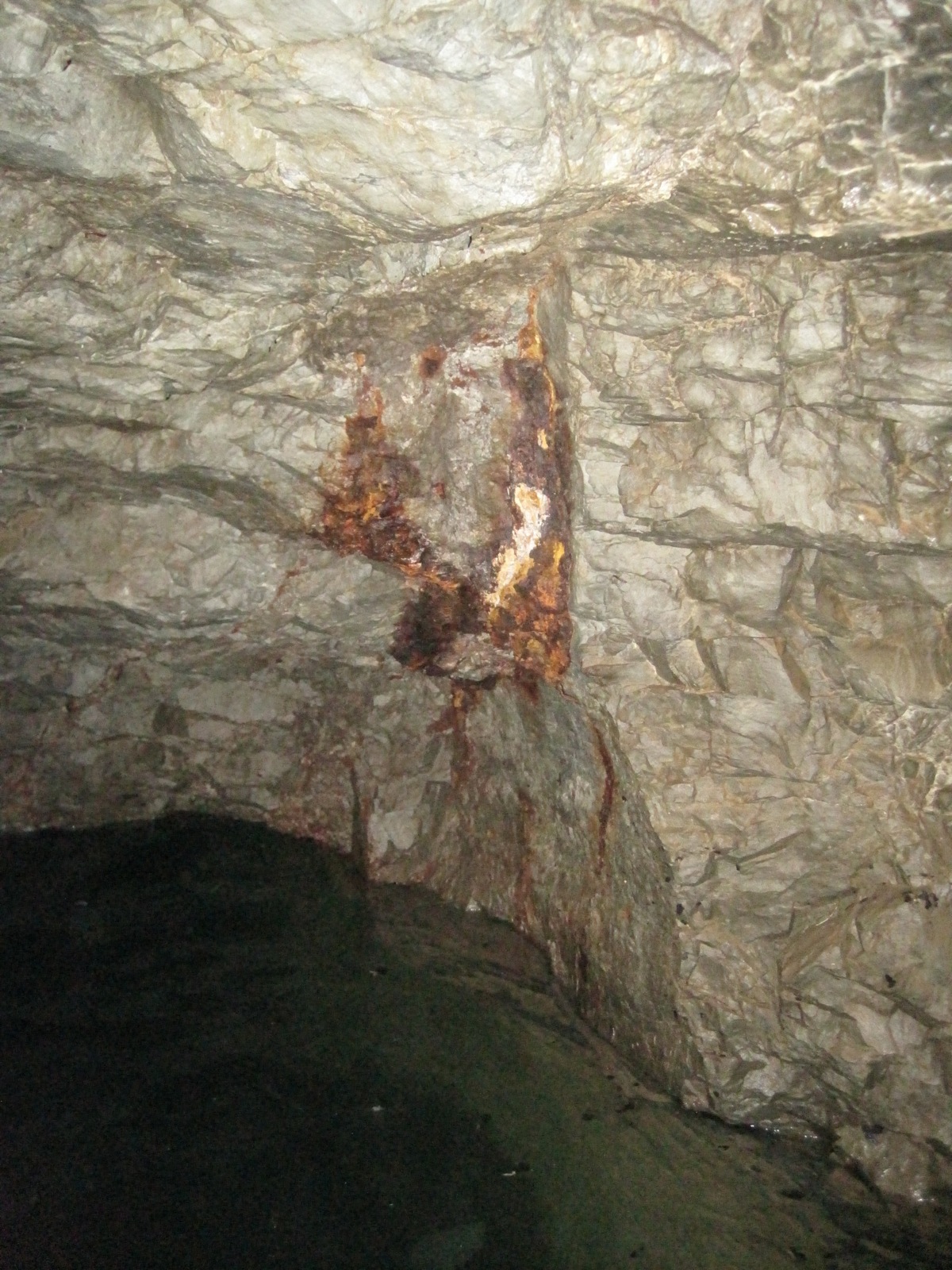A few years ago I got to experience a special secret very few know about in the southeast Kentucky-southwest Virginia-eastern Tennessee region: a very old mine hidden by decades of grown up brush cut into the rock of Cumberland Mountain. I have no idea who owns the property now, but I will re-tell the story as it was told to me by the owner at the time. (Names are changed in the interest of protecting privacy.)

The property owner’s neighbor, Cédric, worked the mine decades ago. He claimed there was a seam of silver that was discovered to rise one inch a foot back in the mountain, and the seam went on for miles.

The mine was being worked in approximately the 1930’s. Whether the ore being mined was silver or another type of valuable material, it was special enough that the miners placed the ore into wooden boxes before carrying it out of the mine and loading it into covered trucks, as if to keep the material being mined a secret. It was even more mysterious that the covered trucks waited until the cover of night had settled in to travel to their destination, never leaving the mine before midnight.

One night, the mysterious miners packed up and left without explanation. No one ever came back until approximately 20 years ago, when the owner received a sole request for permission to re-open the mine, a request which he denied.
Cédric, the old neighbor who had worked the mine, was rumored to have possessed a special healing ability. If a person got hurt and was bleeding bad, all someone had to do was tell Cédric and he could stop the bleeding, whether the person was in his presence or not.

The owner himself lived in the same valley as a child at the time the mine was being worked. He disclosed that he, his brother and father saw what he reported as a “searchlight in the sky, making a big, wide circle around them.” They witnessed this light several times in the night sky during the 1930s and 1940s.
UPDATE: November 1, 2019
Ronald, a reader in Arkansas, wrote in recently about an old mine he found in his state that bears a striking resemblance to the one pictured above. Below is his photo and story:

“Hi. I found an almost identical mine shaft here in Arkansas. Legend has it that a man named Tobe Inmon came from Kentucky and made bullets from lead he mined in nearby hills. As it turns out, the lead was actually silver. People around here have been looking since the late 1800s and I recently found it. Notice the similarly in shape and size…”



